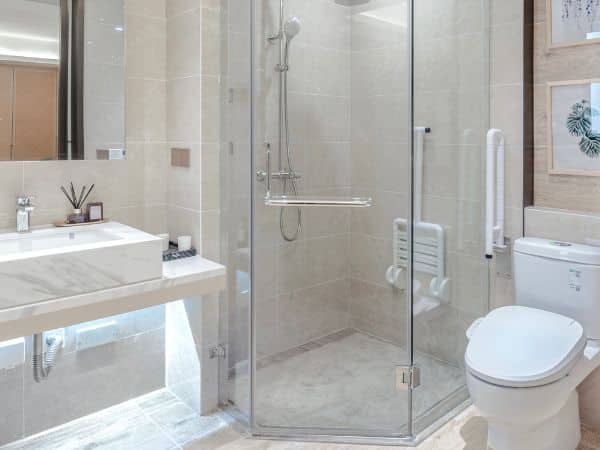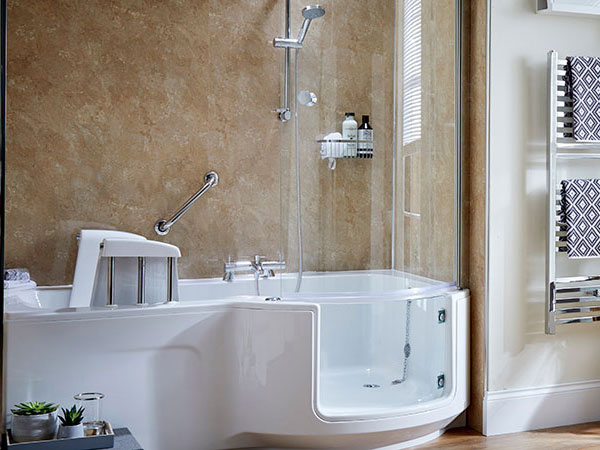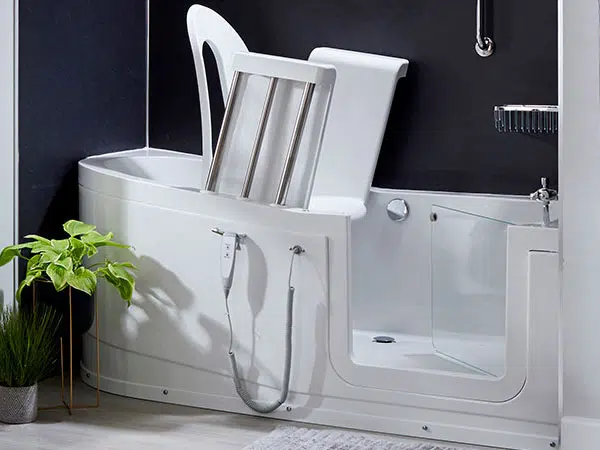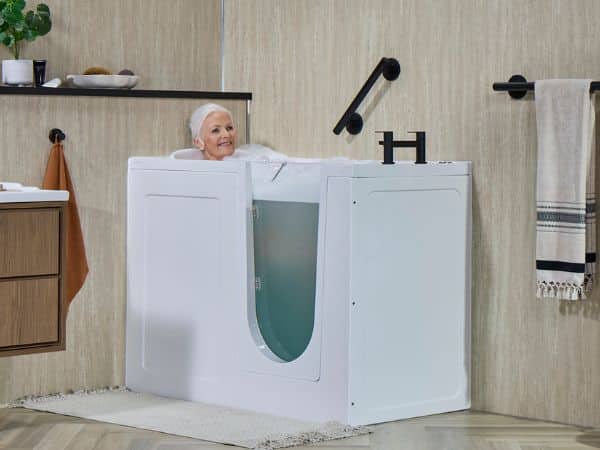Walk-In Showers Vs Wet Rooms
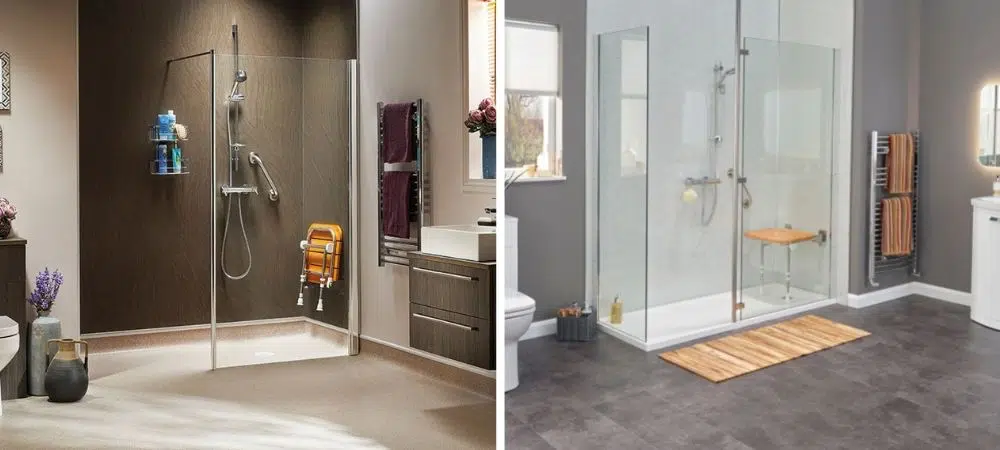
Walk-In Showers Vs Wet Rooms: Pros and Cons
An accessible bathroom plays a vital role in maintaining independence for individuals with limited mobility. Showering can often feel daunting due to concerns around slipping or falling.
At Assistive Bathing, we offer two practical solutions designed to support your independence while showering: wet rooms and walk-in showers. While both options are similar in purpose, they each have distinct features that may better suit different needs and preferences.
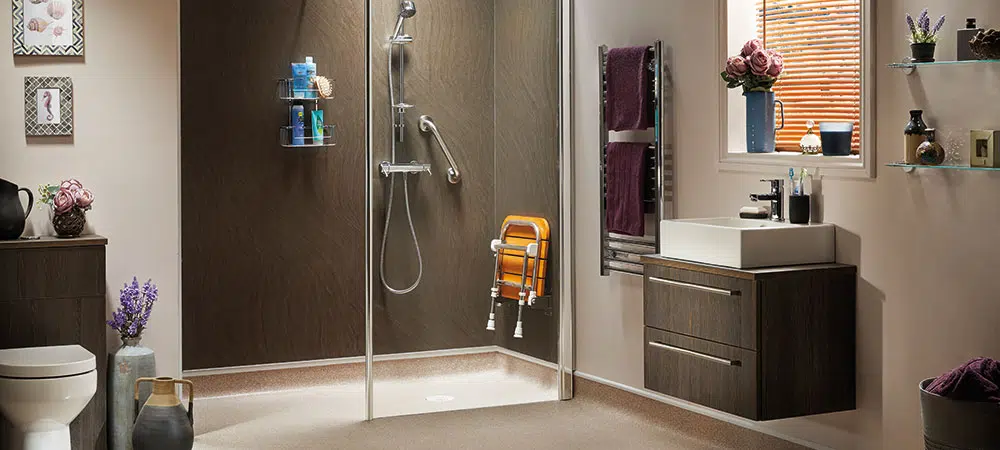
What Is A Walk-In Shower?
Walk-in showers are another bathing option that offers you the ability to shower without having to step over any extremely raised surfaces. There is a range of different styles of walk-in showers available, each one offering different benefits depending on your needs and requirements.
Offering low-level access, walk-in showers make it easier for individuals with little mobility to enter and exit safely. Furthermore, they offer a suitable assisted bathing solution without having to modify your entire bathroom.
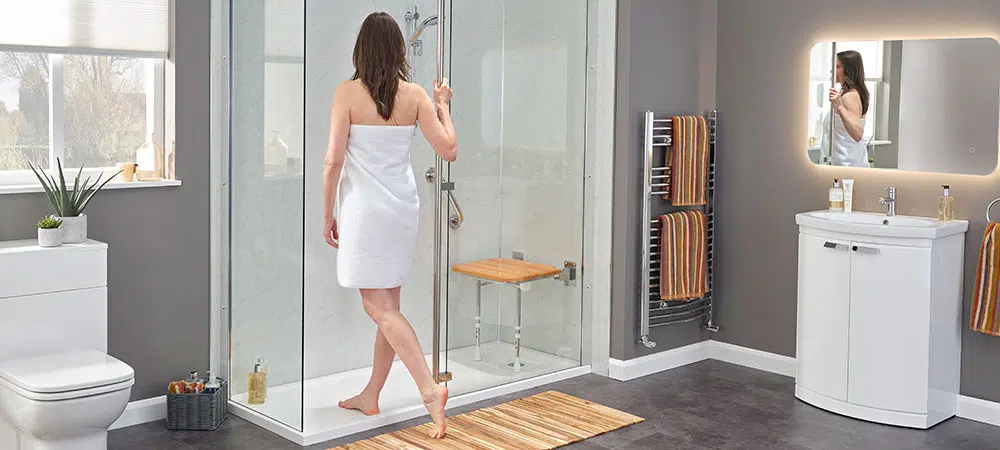
What’s the Difference Between a Wet Room and a Walk-in Shower?
Wet rooms provide the ultimate in easy-access showering and are ideal for wheelchair and mobility scooter users. A wet room transforms the entire bathroom floor into a level, waterproof surface. This means there's no need to step over a threshold, allowing for a safe and independent showering experience.
Walk-in showers also reduce the need to step over high edges but typically feature a low-profile tray. They are available in a wide range of styles and sizes, offering flexibility depending on your individual requirements.
Here's a comparison of the main features:
| Walk-In Showers | Wet Rooms |
|---|---|
| Low threshold, ideal for those with limited mobility | No threshold, ideal for wheelchair users |
| Slip resistant tray minimises the risk of slipping | Slip resistant, durable poly flooring reduces the risk of falls |
| Secure grab handles can be positioned to suit your needs | Anti-splash screens help prevent leaks |
| Comfortable, fold-flat adjustable shower seat, ideal for balance support | Secure grab rails positioned to suit your needs |
| Low level threshold reduces the risk of trips and falls | Height-adjustable, folding shower seat, perfect for washing hair or feet |
| Tempered safety glass as standard |
Walk-in Shower and Wet Room Pros and Cons
Both walk-in showers and wet rooms are excellent additions to an accessible bathroom. However, depending on your space, needs, and preferences, one may be more suitable than the other.
Access
Walk-in showers are ideal for those with limited mobility, as they remove the need to step over a bath or high edge to enter the shower.
Wet rooms offer completely level-access throughout the entire bathroom, which is especially beneficial for wheelchair users or those using mobility aids. This layout promotes full independence and helps maintain personal dignity.
Space
Wet rooms can be an ideal solution for smaller bathrooms thanks to their seamless, open-plan design. Waterproofing the entire space means that the whole room flows, however, makes it very important to ensure good quality non-slip flooring is installed. Wet rooms can also be successfully installed in larger bathrooms with excellent results.
Walk-in showers suit bathrooms of all sizes. While they tend to have a slightly more defined footprint than wet rooms, they offer superb practicality.
Budget
Budget is a key factor when choosing between a wet room and a walk-in shower. Wet rooms generally require a full bathroom renovation, including comprehensive waterproofing, which can increase costs.
Walk-in showers are typically more affordable to install, making them a simpler and cost-effective way to enhance accessibility.
Drainage
Proper drainage is essential for wet rooms. Without it, water can spread across the bathroom floor, posing a slip hazard or even leaking into other areas of your home without the correct flooring and level of waterproofing.
In contrast, the enclosed nature of a walk-in shower keeps water contained within the shower tray, much like a traditional shower.
Cleaning and Maintenance
Keeping your accessible bathroom clean and safe is essential - not only for hygiene but also to reduce the risk of slips and to help your installation last longer. Both wet rooms and walk-in showers are designed for low-maintenance living, though each has its own care requirements.
Wet Rooms
- Minimal effort cleaning: With no shower tray and fewer joints, wet rooms are simple to clean. A quick mop of the floor and a wipe-down of any screens or wall tiles is often all that's needed.
- Regular drainage checks: As the whole floor functions as the shower area, it’s important to keep drains free from hair and soap residue to ensure effective water flow and avoid flooding.
- Good ventilation is essential: To prevent moisture build-up and mould, keep the room well-ventilated using an extractor fan or by opening a window.
- Caring for anti-slip flooring: Use gentle, non-abrasive cleaning products designed for textured or slip-resistant surfaces to maintain safety and longevity.
Walk-In Showers
- Keep the tray clean: Use a mild, non-scratch bathroom cleaner to remove soap scum and prevent limescale on the shower tray.
- Maintain clear glass screens: To avoid streaks and water marks, wipe screens down after each use or clean regularly with a glass-safe spray.
- Inspect seals and joints: Check the seals around the tray and screens occasionally to ensure they remain watertight and in good condition.
Is a Walk-in Shower Tray Better Than a Wet Room?
There’s no one-size-fits-all answer – it depends entirely on your accessibility needs, the design of your bathroom, and your personal preferences.
At Assistive Bathing, we’re here to help. With years of experience, we can guide you through the decision-making process to find the right option for you – whether it’s a walk-in shower, wet room, or walk-in bath.
We offer a free, no-obligation consultation, where one of our expert designers will visit your home, assess your needs, and provide a bespoke bathroom design tailored just for you.
Other Articles That May Interest You
Discover smart walk-in bath and shower ideas for small bathrooms. Stylish, safe, and space-saving solutions from Assistive Bathing.
Bathrooms can be dangerous for the elderly. Here's how a walk-in bath can make them safer for the elderly...
How much does a walk-in bath tub cost? Prices vary dependent on size, style and the needs of a customer. Plus, installation costs...
Discover the health and wellbeing benefits of hot baths and showers, plus safe, accessible solutions for those with limited mobility.

